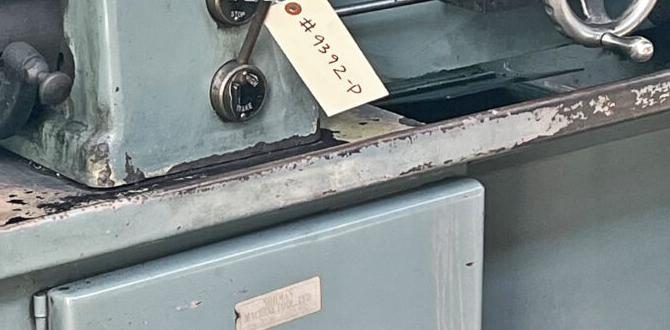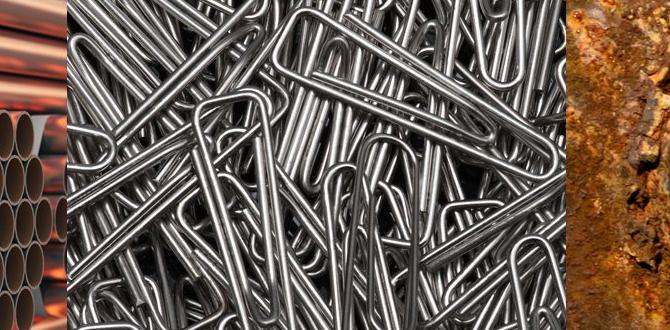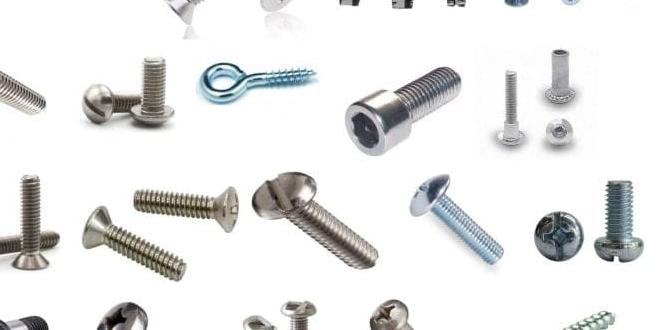Quick Summary: The TiAlN coated ball nose end mill is absolutely essential for efficiently roughing stainless steel 304 on your milling machine. Its specialized geometry and coating handle the tough, gummy nature of stainless steel 304, providing faster material removal and longer tool life for your projects.
Tialn Ball Nose End Mill: Your Secret Weapon for Stainless Steel 304 Roughing
Working with stainless steel 304 can feel like wrestling a tough, sticky beast, especially when you’re just starting out. Unlike softer metals, it tends to gum up your tools and fight your milling efforts. This often leads to frustration, poor surface finish, and even broken tools. But what if I told you there’s a specific tool designed to make this process much, much smoother? Let’s dive into why a TiAlN ball nose end mill is your ultimate solution for tackling the roughing stage of stainless steel 304.
You’ve probably encountered the challenge: your standard end mill isn’t cutting cleanly through that stubborn 304 stainless. It’s dragging, the chips are building up, and you’re not making much progress. This is where specialized tooling shines. We’re going to break down exactly what makes a TiAlN ball nose end mill so effective for this specific job. By the end of this guide, you’ll feel confident in choosing and using this tool to conquer stainless steel 304 roughing.
Why is Stainless Steel 304 So Tricky to Mill?
Before we jump into the solution, let’s quickly understand the problem. Stainless steel 304, a common austenitic stainless steel, is valued for its corrosion resistance and strength. However, these desirable properties come with milling challenges:
- Work Hardening: As you cut into it, 304 can rapidly harden the material directly ahead of the cutting edge. This requires more force and can lead to premature tool wear.
- Gummy Nature: It tends to stick to the cutting tool, leading to chip recasting and built-up edge (BUE). This reduces cutting efficiency and can cause surface finish issues.
- Low Thermal Conductivity: Stainless steel doesn’t dissipate heat well. This means heat generated by cutting gets concentrated at the tool tip, accelerating wear.
These factors demand a cutting tool that can shear material efficiently, reduce friction, manage heat, and resist wear. This is precisely where our specialized end mill comes into play.
The Power Duo: Ball Nose Geometry and TiAlN Coating
The effectiveness of this end mill comes from combining two key features: its specific shape (ball nose) and its surface coating (TiAlN).
Understanding Ball Nose End Mills
A ball nose end mill has a fully radiused tip, meaning the cutting edge is a perfect hemisphere. This is dramatically different from a flat-end mill or a corner-radius end mill.
- Versatility in 3D Machining: The rounded tip is excellent for creating curved surfaces, complex contours, and achieving fillets in pockets.
- Reduced Stress Concentration: Compared to a sharp corner, the radius distributes cutting forces more evenly, reducing the risk of chipping.
- Chip Evacuation: While not their primary strength for deep pockets, the rounded geometry can help manage chip flow in many applications, especially with proper milling strategies.
The Magic of TiAlN (Titanium Aluminum Nitride) Coating
The physical coating on the cutting tool might not seem like a big deal, but it’s a game-changer for tough materials like stainless steel 304. TiAlN is a hard, ceramic-like coating that offers:
- Exceptional Hardness: TiAlN is incredibly hard, which helps it resist abrasion and wear, especially at higher cutting temperatures.
- High-Temperature Resistance: It forms a protective aluminum oxide layer at high heat, preventing the cutting edge from softening and degrading. This is crucial for stainless steel, which generates significant heat.
- Reduced Friction: The smooth, dense surface of the TiAlN coating minimizes friction between the chip and the tool, resulting in less heat generation and reduced tendency for material to stick.
- Increased Tool Life: All these benefits combine to significantly extend the lifespan of your end mill, meaning fewer tool changes and more consistent results.
Why This Combination is Key for Stainless Steel 304 Roughing
When you combine these two features – the rounded tip of the ball nose and the heat-resistant, low-friction TiAlN coating – you get a tool perfectly suited for the initial material removal, or roug hing, of stainless steel 304.
- Efficient Material Removal: The tool is designed to take decent ‘bites’ of material without easily breaking down.
- Heat Management: The TiAlN coating battles the heat generated by cutting tough stainless steel.
- Chip Control: While not a dedicated chip-breaker, the geometry works well with the coating to prevent catastrophic chip welding.
- Durable for Tough Cuts: It can withstand the forces involved in roughing, meaning you can push it a bit to get the job done faster.
Choosing the Right TiAlN Ball Nose End Mill for 304 Roughing
Not all TiAlN ball nose end mills are created equal, and selecting the right one depends on a few factors. We’re focusing on roughing stainless steel 304, which has specific requirements.
Key Specifications to Consider:
- Material: Look for end mills made from High-Speed Steel (HSS) or, even better, Carbide. Carbide is significantly harder and more rigid, making it ideal for stainless steel.
Solid Carbide vs. HSS for Stainless Steel
For cutting stainless steel, especially in a workshop setting where you want good performance without constant tool changes, solid carbide is almost always the preferred choice. Here’s a quick comparison:
Feature Solid Carbide End Mill High-Speed Steel (HSS) End Mill Hardness Very High (maintains hardness at high temps) Moderate (softens at higher temperatures) Rigidity Very High (less deflection) Moderate (more prone to chatter) Tool Life Significantly Longer Shorter, especially in tough materials Heat Resistance Excellent Fair Cost Higher initial cost Lower initial cost While HSS can sometimes be used with specific coatings and lower speeds, carbide offers a more robust and efficient solution for regularly machining stainless steel 304.
-
- Coating: Ensure it’s explicitly TiAlN. Some end mills have multiple coatings, but for this application, TiAlN is the go-to.
- Number of Flutes: For roughing sticky materials like stainless steel, using end mills with fewer flutes is often beneficial. 2-flute and 3-flute designs generally provide better chip clearance and are less prone to clogging. More flutes (like 4 or 6) are usually better for finishing or less demanding materials.
- Helix Angle: A higher helix angle (like 30-45 degrees) helps lift chips away from the cutting zone and can reduce cutting forces. For roughing stainless steel, this is a great feature. Standard helix angles are common, but an increased helix is a bonus.
- Diameter: Choose a diameter appropriate for your part geometry and machine capabilities. Common sizes range from 1/8″ (3mm) up to 1″ (25mm) or more.
- Ball Radius: This is half the diameter for a true ball nose. For roughing, you’re often not as concerned with the exact radius as you are with the tool’s ability to clear material. However, knowing it helps in CAM programming.
A good starting point for roughing stainless steel 304 would be a 2-flute or 3-flute solid carbide TiAlN coated ball nose end mill with a 30-degree helix angle.
Setting Up Your Milling Machine for Success
Once you have the right tool, preparing your machine and workpiece is crucial for efficient and safe operation. Think of this as a checklist before you hit the ‘go’ button.
Essential Machining Parameters:
These are general guidelines. Always refer to manufacturer recommendations for your specific end mill and machine, and be prepared to adjust based on your experience and testing. For stainless steel 304, you’ll want to use lower speeds and higher feed rates compared to softer metals.
Recommended Speeds and Feeds (General Guidelines for Stainless Steel 304 Roughing):
Remember, these are starting points! Chip load is one of the most critical factors for tool life and surface finish. It’s often expressed as “inch per tooth” (ipt) or “millimeters per tooth” (mm/tooth).
| End Mill Diameter | Spindle Speed (RPM) | Feed Rate (IPM) | Chip Load (IPT) | Depth of Cut (DOC) | Width of Cut (WOC) |
|---|---|---|---|---|---|
| 1/4″ (6mm) | 300 – 600 | 8 – 15 | 0.003 – 0.005 | 0.050″ – 0.100″ (1.2mm – 2.5mm) | 50% of Diameter |
| 1/2″ (12mm) | 200 – 400 | 15 – 30 | 0.004 – 0.006 | 0.100″ – 0.200″ (2.5mm – 5mm) | 50% of Diameter |
| 1″ (25mm) | 100 – 200 | 25 – 50 | 0.005 – 0.008 | 0.200″ – 0.400″ (5mm – 10mm) | 50% of Diameter |
Important Notes for Speeds and Feeds:
- Speed (RPM): Start at the lower end of the range and ramp up if the cut is too slow and chips are not forming well. Too fast a speed will overheat the tool quickly.
- Feed Rate (IPM): This is what you’ll likely control on your machine’s DRO or with your CNC control. Aim for a feed that generates a good chip.
- Chip Load (IPT): This is the thickness of the material removed by each cutting edge per revolution. Maintaining the proper chip load is crucial. Too small, and you rub; too large, and you overload the tool.
- Depth of Cut (DOC): For roughing, you want to remove material quickly. However, don’t take too deep a cut that exceeds the tool’s rigidity or your machine’s power. It’s often better to take multiple shallower passes than one very deep pass. A common rule of thumb for roughing is to cut to about 25-50% of the tool diameter in depth, or even less for very tough materials.
- Width of Cut (WOC): When milling pockets or features, always ensure your width of cut isn’t too large. For roughing, a radial depth of cut (how deep you step over sideways) of 25-50% of the tool diameter is a good starting point. This helps prevent the tool from rubbing excessively against the side walls.
Coolant/Lubrication: A Must-Have
Machining stainless steel 304 generates a lot of heat. Without adequate cooling, your tool will dull rapidly, and you’ll experience the dreaded chip welding. Consider these options:
- Through-Spindle Coolant: If your milling machine has this feature, use it! It delivers coolant directly to the cutting zone, which is highly effective for stainless steel.
- Flood Coolant: A standard coolant flood system is essential for general milling. Use a good quality synthetic or semi-synthetic coolant designed for ferrous metals.
- Misting/Soluble Oil Systems: These deliver a fine mist of coolant and lubricant directly to the cutting edge. They are very effective for stainless steel and use less coolant than flood systems.
- cutting fluid Stick/Paste: For manual operations or smaller machines, a high-quality cutting fluid stick or paste applied directly to the tool or workpiece can provide localized lubrication and cooling.
The goal is to keep the cutting edge cool and lubricated to reduce friction and prevent chip buildup. You can learn more about Metal Machining Coolants and Lubricants from resources like the Manufacturing USA website.
Workholding and Setup
A strong, rigid setup is paramount. Any movement or chatter will lead to poor results and potential tool failure.
- Secure Workpiece: Use clamps, a vise, or your machine’s table to firmly secure the stainless steel 304 workpiece. Ensure it cannot lift or move during the cut.
- Rigid Tool Holder: Use a good quality tool holder. A CAT, BT, or HSK taper holder, or a well-maintained R8 holder, is far superior to just a set-screw collet holder for this material. A good retention knob system also helps.
- Short Reach: Keep the overhang of your end mill as short as possible to maximize rigidity and minimize vibration.
Step-by-Step Roughing Process with a TiAlN Ball Nose End Mill
Here’s a practical approach to roughing stainless steel 304 using your TiAlN ball nose end mill. We’ll assume you’ve set up your speeds, feeds, and coolant.
Step 1: Tool Installation and Zeroing
Insert the TiAlN ball nose end mill securely into your chosen tool holder. Place the tool holder into the spindle of your milling machine and tighten it properly. If using a CNC, load the tool into the spindle and set your tool length offset.
Using your edge finder or probe, accurately find the workpiece zero point. This is critical for ensuring your program or manual movements start in the correct location.
Step 2: Set Up Your Cutting Strategy (CAM or Manual)
For CNC Machining (CAM Software):
- Select a roughing strategy that suits your part geometry. Common strategies include:
- 3D Adaptive Clearing: This strategy maintains a constant chip load by automatically adjusting the toolpath to ensure the tool is always engaged in a consistent amount of material. It’s ideal for removing large volumes of material efficiently.
- Pocketing: For simple pockets, a standard pocketing routine will work. Ensure you set appropriate radial and axial depths of cut.
- Contour Roughing: For milling around external shapes or through-holes, contour strategies are effective.
- Input your calculated speeds and feeds, tool diameter, and ball radius.
- Define your depth of cut and width of cut based on the recommendations.
- Generate the G-code. Program a safe retract plane high above the workpiece.
For Manual Machining:
- Plan your cuts. You might use a dial indicator to track your position.
- Engage the spindle.
- Carefully feed the tool into the material using your X, Y, and Z axis handwheels. Listen to the sound of the cut and feel for resistance.
- Use shallow depths and widths of cut. It’s better to make multiple passes to reach your final depth or shape than to force the tool.
- Take advantage of the ball nose for creating radiused features or clearing pockets.
Step 3: Execute the Roughing Passes
For CNC Machining:
- Perform a dry run (without the tool touching the workpiece) to verify the programmed toolpath.
- Activate your coolant system.
- Initiate the cutting program.
- Observe and Listen: Pay close attention to the sound of the cutting, chip formation, and any unusual vibrations. If something sounds wrong, be ready to pause or stop the machine.
- Monitor Chip Evacuation: Ensure chips are being cleared from the cutting zone and not re-cutting.
- Check for Tool Wear: After the roughing passes, inspect








